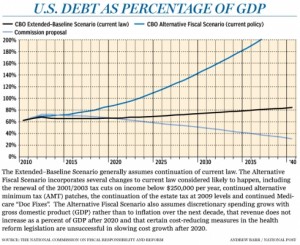
Businesses strive when taking many things into account. Customer service is perhaps one of the most important aspects in business. Consumers make up the market, and the demand. In order for a business to gain market share, improve customer loyalty, and develop a positive image, customer service should be the number one focus. For example, Zappos is well-known for their exceptional customer service; as a result, not only have they managed to create a loyal customer base that can promote the advertising technique of word of mouth, but they have also managed to attract and maintain consumers through such exceptional services. Management has a crucial role to play in setting the standards for the customer service quality the company is willing to provide. Depending on the quality of this service it can either increase or decrease a company’s popularity among consumers.
Performance across many levels can be related back to the management of an organization. In order to manage a business effectively there is a need for many traits: leadership, reliability, a clear vision, and appropriate decision making skills. Some of the more successful companies, such as Apple, have seen improvements through the years not only for their products but the effective management system they have in place; more specifically, their leaders did not strive to make money and instead focused on making their visions for the consumer’s market come true.





![rogers_wireless[2]](https://blogs.ubc.ca/peymangazor/files/2010/12/rogers_wireless22-300x152.gif) Telecommunication companies are discovering new strategies to gain market share by the day, and one that has been proven is the expansion of media. Upon breaking down the sources of its profits, Rogers has concluded very minimal profits in media. Currently, the media profits for Rogers are generated from Rogers Publishing Limited, which has more than 70 consumer and business publications, 51 radio stations, television broadcasting with OMNI, Citytv and the Sportsnet network, OLN, G4 Tech, and The Shopping Channel which is Canada’s home shopping service. Rogers also owns the entire Toronto Blue Jays franchise, a contributing factor in media profits.
Telecommunication companies are discovering new strategies to gain market share by the day, and one that has been proven is the expansion of media. Upon breaking down the sources of its profits, Rogers has concluded very minimal profits in media. Currently, the media profits for Rogers are generated from Rogers Publishing Limited, which has more than 70 consumer and business publications, 51 radio stations, television broadcasting with OMNI, Citytv and the Sportsnet network, OLN, G4 Tech, and The Shopping Channel which is Canada’s home shopping service. Rogers also owns the entire Toronto Blue Jays franchise, a contributing factor in media profits.
![BoosterJuice[2]](https://blogs.ubc.ca/peymangazor/files/2010/12/BoosterJuice2-300x100.jpg)
 The first Booster Juice opened in 1999 in Sherwood Park, Alberta. Once Wishewan gathered a customer base, he was confident in his business. Booster Juice started franchising in 2000, and began its dominance in the market. The franchise fee is fairly priced at $25 000, and the company collects a 6 % royalty. The approximate wait time for a franchise is around 6-18 months, depending on the location.
The first Booster Juice opened in 1999 in Sherwood Park, Alberta. Once Wishewan gathered a customer base, he was confident in his business. Booster Juice started franchising in 2000, and began its dominance in the market. The franchise fee is fairly priced at $25 000, and the company collects a 6 % royalty. The approximate wait time for a franchise is around 6-18 months, depending on the location.
![774571560_b02ad9d2c3[1]](https://blogs.ubc.ca/peymangazor/files/2010/10/774571560_b02ad9d2c31-300x202.jpg)
![recession-2[1]](https://blogs.ubc.ca/peymangazor/files/2010/10/recession-21-300x165.gif) There are many other things that have contributed to Whistlers decrease in customers. The rising Canadian dollar has driven away American tourists who use to use the strong U.S. dollar to their advantage. B.C.’s new harmonized sales tax is also another negative, making goods and services more expensive at the resort. Lastly, surrounding competition is driving potential customers away from Whistler due to their cheaper rates. The resort charges a staggering $93 for a one day pass (not including any deals) ! Whistler Blackcomb clearly needs to discover better ways in attracting mountain lovers, especially in these harder economic times.
There are many other things that have contributed to Whistlers decrease in customers. The rising Canadian dollar has driven away American tourists who use to use the strong U.S. dollar to their advantage. B.C.’s new harmonized sales tax is also another negative, making goods and services more expensive at the resort. Lastly, surrounding competition is driving potential customers away from Whistler due to their cheaper rates. The resort charges a staggering $93 for a one day pass (not including any deals) ! Whistler Blackcomb clearly needs to discover better ways in attracting mountain lovers, especially in these harder economic times.![112474_blackberrytorch9800[1]](https://blogs.ubc.ca/peymangazor/files/2010/10/112474_blackberrytorch98001-300x297.jpg)
![gallery01-20100607[1]](https://blogs.ubc.ca/peymangazor/files/2010/10/gallery01-201006071-300x190.jpg) Overall, I believe the author is mistaken that Apple will be the dominant force. The smaller core franchise that Blackberry happens to control will turn out to be more valuable than Apple`s.
Overall, I believe the author is mistaken that Apple will be the dominant force. The smaller core franchise that Blackberry happens to control will turn out to be more valuable than Apple`s.![moneys_294621a_J_294621cl-3[1]](https://blogs.ubc.ca/peymangazor/files/2010/10/moneys_294621a_J_294621cl-311.jpg)
![nyse[1][1]](https://blogs.ubc.ca/peymangazor/files/2010/10/nyse11-300x229.jpg)


